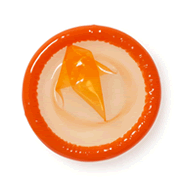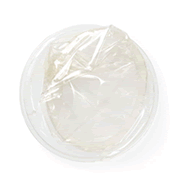Can you get an STD from oral sex?
There's good news and bad news: You can’t get pregnant from oral sex, but you can get a sexually transmitted infection.

While you can’t get pregnant from oral sex, you can get a sexually transmitted infection (STI, a.k.a. STD). The risk of getting an STI from oral sex is a little different from the risk of vaginal sex, so let’s go over the details.
First, the basic biology
STIs are bacteria or viruses that rely on a certain kind of skin, known as a mucous membrane. The head of the penis has skin like this, and so do the labia, vagina, and rectum. But guess what? The inside of the mouth and the throat have the same kind of skin. So having oral sex can make this skin vulnerable to infection. Oral sex refers to using the mouth to stimulate the penis (fellatio), the vagina (cunnilingus), or the anus (anilingus). Here is what we know about the risks of getting or giving an STI during oral sex, and how to protect against it.
HPV
What is HPV? Human papillomavirus (HPV) is the most common STI in the U.S. There are over 40 strains of HPV that live on mucous membranes, and some lead to an increased risk of cancer many years later. With the exception of the HPV strains that cause genital warts, most strains don’t have visible symptoms. The body can clear an HPV infection on its own, but there’s no pill you can take to cure it.
HPV and oral sex. HPV can be passed from person to person during oral sex. The virus is quite happy to live in the mouth and back of the throat. If the infection sticks around, it can lead to cancer of the tongue or throat many years later.
Protect yourself. The HPV vaccine protects against getting HPV from any type of sex, including oral sex. The vaccine is now recommended for both gals and guys, and the latest one protects against nine strains. Barriers may also help reduce HPV transmission, although they may not work as reliably for HPV as for other STIs.
Herpes
What is herpes? Herpes is the second most common STI in the U.S. There are two types of herpes simplex virus (HSV). HSV-1 most commonly causes cold sores around the mouth, and HSV-2 most commonly causes genital herpes. But these two viruses are not super picky about whether they live in the mouth or genitals—they can hop around.
Both HSV-1 and HSV-2 can cause painful blisters and sores, but there can also be long periods when they’re just hanging out without causing symptoms. Herpes is most likely to be passed from person to person when there are blisters or sores, but it can be passed when there are no visible blisters or sores too. There are treatments that keep herpes in check, but there is no way to cure it.
Herpes and oral sex. Performing oral sex on a partner with genital herpes can cause oral herpes. Receiving oral sex from a partner with oral herpes can cause genital herpes.
Protect yourself. The best way to protect yourself from herpes is to use a barrier between mouth and genitals/rectum. You can use a male or female condom, a natural latex rubber sheet, a dental dam, or cut open a non-lubricated condom. Herpes transmission can also be decreased if the partner with herpes takes a daily prevention medication.
Gonorrhea and chlamydia
What are gonorrhea and chlamydia? These bacteria are the third most common STIs in the U.S., and folks under age 26 are the most likely to have them. Although they’re highly contagious, both infections can be cured with antibiotics.
Gonorrhea, chlamydia, and oral sex. If you have oral sex with a partner with gonorrhea or chlamydia, you can get a throat infection. Most of the time, gonorrhea in the throat does not cause any symptoms, but sometimes it causes a sore throat similar to a strep throat infection (gonoccal pharyngitis). Chlamydia in the throat rarely causes symptoms. The risk of getting gonorrhea or chlamydia infections in the throat is higher with fellatio than with cunnilingus.
Protect yourself. You can reduce the risk of gonorrhea and chlamydia transmission during oral sex if you avoid ejaculate in the mouth. Barriers also help. Whether or not you have symptoms of either infection in the throat, getting tested and treated, and getting your partner treated will prevent passing the infection back and forth.
HIV
What is HIV? Human immunodeficiency virus (HIV) doesn’t live on mucous membranes, but it can travel in blood, ejaculate, vaginal secretions, and other bodily fluids. There are many treatment options that keep HIV in check, but there is no surefire way to cure it. If untreated, HIV can cause AIDS.
HIV and oral sex. The risk of HIV from oral sex is way lower than from anal or vaginal sex—but it’s not zero. The riskiest kind of oral sex is for a man with HIV to ejaculate in the mouth of his partner. For a person giving oral sex, his or her risk may be greater when there are sores in the mouth or unhealthy gums. For a person receiving oral sex, the risk may be greater if there are sores, cuts from shaving around his or her genitals, or another STI in the mix.
Protect yourself. You can reduce the risk of HIV transmission during oral sex if you avoid ejaculate in the mouth using a condom or withdrawal. If your partner has HIV, you can reduce your risk from any kind of sex, including oral sex, by taking medicines known as pre-exposure prophylaxis (PrEP). Not everyone needs PrEP, but some benefit from it. Check with your health care provider for more information. If your partner has HIV and takes antiretroviral therapy (ART) consistently and correctly, the risk of transmission is also lower.
How do you feel about this article?

Heat up your weekends with our best sex tips and so much more.

